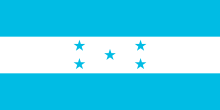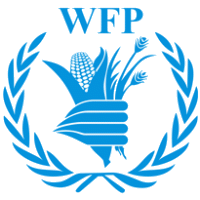Hunger in Honduras
About the Country
[edit]

Honduras is in the heart of Central America, bordering the Caribbean Sea, Pacific Ocean, Guatemala, El Salvador, and Nicaragua. It has an agriculture-based economy, focused on bananas, coffee, and palm oil, faces high poverty and inequality, with growth obstructed by external factors and internal corruption. There is high crime linked to drug trafficking and gangs, compounded by environmental issues like deforestation and hurricane vulnerability, which affects development. Honduras features a diverse culture of indigenous, Spanish, and African influences, with the Garifuna culture contributing significantly to its traditions and music.[1]
Statistics
[edit]Honduras has a population of 10.2 Million people, and 60% lives in extreme poverty. The cost to aid undernutrition and obesity in Honduras is US $2.3 billion. Almost a fifth of children under the age of 5 suffer from impaired growth due to malnutrition. This is called stunting. 23% of children between 6-59 months suffer from chronic malnutrition. These statistics are from 2024.[2]
Causes
[edit]The root cause for food insecurity in Honduras is poverty. Violence and regular climate-related disasters like flooding, drought, and land degradation have a particularly severe impact on the poor and vulnerable populations. Additionally, moderate economic growth coupled with rising inequality, displacement of communities, and restricted access to essential services contribute to growing food insecurity and malnutrition. Limited education about nutrition plays a significant role in undernourishment as well. In Honduras, many people living in poverty lack proper knowledge about healthy eating, resulting in nutrient deficiencies. Additionally, a diet that lacks variety can contribute to stunting in children.[2]
Women and indigenous populations are the most vulnerable, especially as a consequence of the COVID-19 pandemic.[3] In regions like Honduras, the Central African Republic, Lesotho, and Somalia, the share of people facing severe food insecurity rose by over 10 percent, and the acute hunger situation is deteriorating.[4]
World Food Programme (WFP)
[edit]
The WFP is a branch of the United Nations that combats hunger and food security around the world. They have an ongoing 5 year plan in Honduras in order to decrease malnutrition and food insecurity in the country. The WFP plans to collaborate with the Honduran government to address the underlying issues of food insecurity, malnutrition, and poverty, aiming to create healthier and more prosperous communities. The strategic plan will enhance diverse and resilient food systems and strengthen social protection and emergency response mechanisms to support vulnerable populations. It emphasizes building the capacity of local partners, promoting better dietary habits, advancing gender equality, and combating gender-based violence. This plan will adopt a nationwide approach, with an increased focus on urban and peri-urban areas compared to the previous plan. There are five outcomes the WFP expects from this plan. The first outcome claims crisis-affected populations will become less vulnerable as they secure their food and nutrition needs and enhance their resilience to future emergencies and climate shocks. The second outcome is that vulnerable populations in key rural and urban areas will enhance their livelihoods and income stability, leading to improved food security, nutrition, and sustainable climate-resilient food systems year-round. The third outcome states that by 2027, vulnerable populations in key rural and urban areas will have reliable access to social protection services that enhance food and nutrition security, contributing to human capital development in Honduras. The fourth outcome asserts that by the same year, the Government of Honduras will enhance its social protection systems and capacity to implement inclusive, gender-sensitive policies, increasing public trust in institutions. The fifth and final outcome is that key partners in Honduras benefit from efficient services throughout the entire process.[3]
References
[edit]- ^ "Honduras | Map, Population, History, Geography, & Culture | Britannica". www.britannica.com. 2024-10-02. Retrieved 2024-10-03.
- ^ a b "Honduras | World Food Programme". www.wfp.org. 2024-03-29. Retrieved 2024-10-03.
- ^ a b "Honduras country strategic plan (2023–2027) | World Food Programme". www.wfp.org. Retrieved 2024-10-08.
- ^ "COVID-19 impacts driving up acute hunger in countries already in food crisis - World | ReliefWeb". reliefweb.int. 2020-09-15. Retrieved 2024-10-10.
